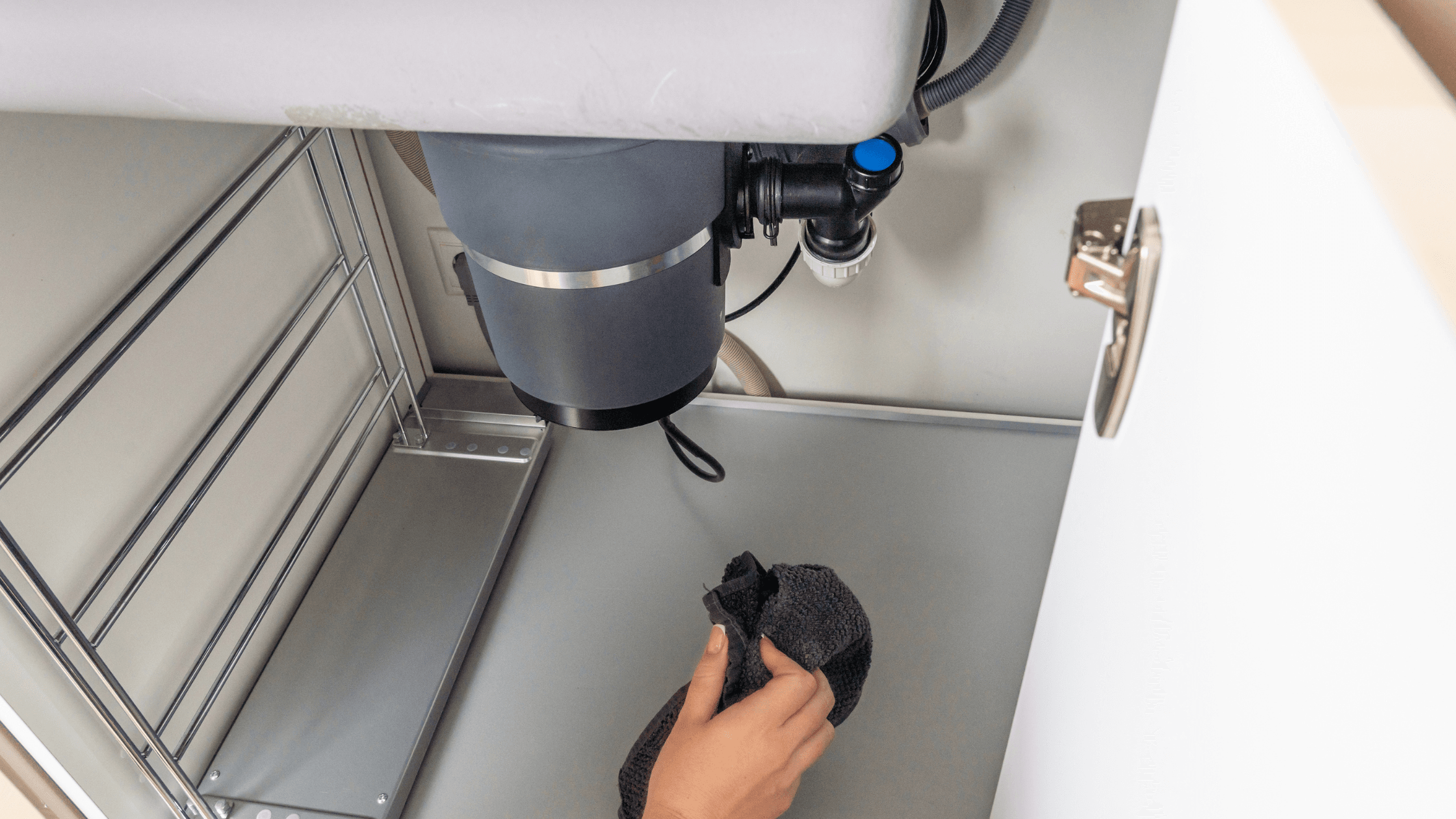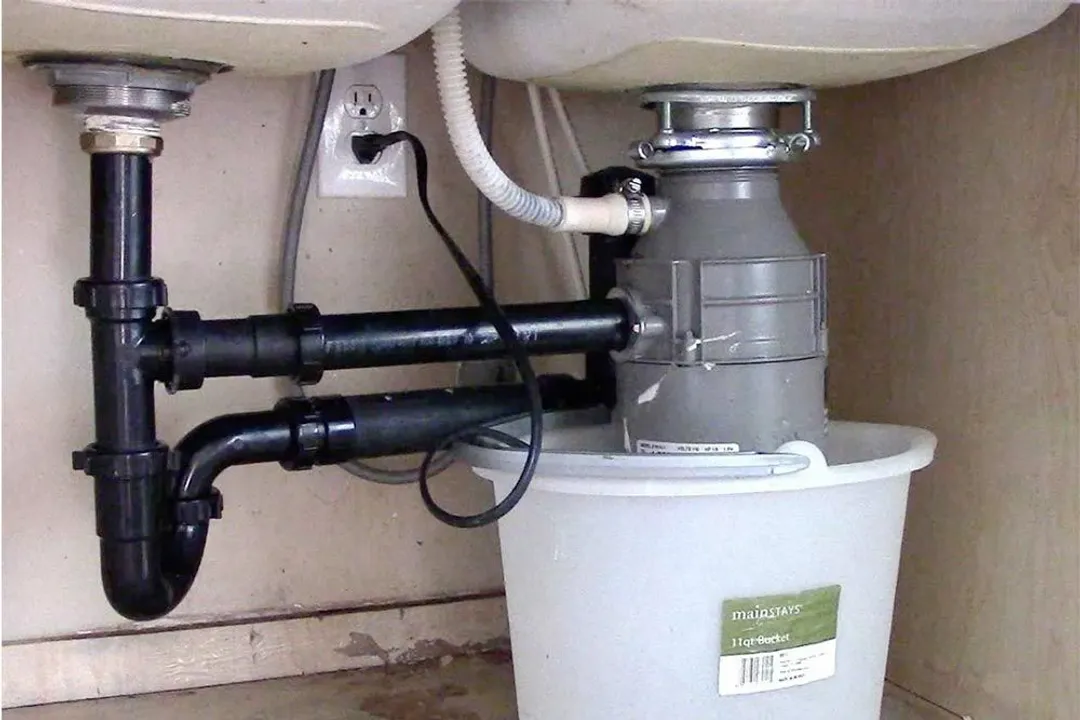The Guide to Resolving a Leak in Your Garbage Disposal
The Guide to Resolving a Leak in Your Garbage Disposal
Blog Article
What're your ideas concerning Why Is ?

Waste disposal unit are vital cooking area home appliances that aid in throwing away food waste efficiently. However, a leaking waste disposal unit can be an irritating and unpleasant problem to manage. Thankfully, lots of leakages can be taken care of conveniently with a couple of basic steps. In this write-up, we will review how to fix a dripping waste disposal unit efficiently.
Introduction
Waste disposal unit are set up under kitchen sinks and are developed to shred food waste into smaller sized pieces, allowing it to travel through the plumbing system conveniently. While these gadgets are typically trusted, leakages can occur gradually due to deterioration, loose links, or damage to the unit.
Step-by-Step Overview to Fixing a Leaking Waste Disposal Unit
Switch off the Power
Before trying any kind of fixings, make sure that the power to the waste disposal unit system is turned off to avoid the danger of electrical shock.
Find the Leakage
Recognize the precise place of the leak and establish the cause
Tighten Links
Use a wrench to tighten up any loose links in between the disposal device and the plumbing system.
Replace Seals or Gaskets
If the leak is due to worn seals or gaskets, get rid of the old elements and change them with new ones.
Patching Fractures or Openings
For cracks or openings in the disposal device, usage epoxy or a suitable patching material to secure the broken location.
Identifying the Resource of the Leakage
Prior to trying to repair a dripping waste disposal unit, it is necessary to recognize the source of the leakage. This can generally be done through visual examination or by conducting straightforward tests.
Visual Inspection
Check the waste disposal unit unit thoroughly for any indications of water leakage. Pay very close attention to areas around seals, gaskets, and link factors.
Checking for Leakages
One method to test for leaks is by running water via the disposal device and checking for any type of noticeable signs of leakage.
Usual Reasons For Leakages in Trash Disposals
Worn Seals and Gaskets
Seals and gaskets play a critical function in preventing water from leaking out of the waste disposal unit. Over time, these elements can weaken, causing leakages around the disposal unit.
Loose Links
The links between the garbage disposal and the plumbing system can come to be loosened gradually, causing water to leakage out during procedure.
Cracks or Openings in the Disposal System
Physical damages to the garbage disposal, such as splits or openings in the housing, can also result in leaks.
Tools and Materials Needed for Fixing a Dripping Garbage Disposal
Before beginning the fixing procedure, collect the needed devices and products, consisting of a screwdriver, flexible wrench, plumbing's putty, substitute seals or gaskets, and epoxy or patching product for fixing cracks or holes.
Checking the Garbage Disposal After Fixing
As soon as the fixing is full, check the waste disposal unit by running water through it to ensure that the leak has been resolved.
Preventive Upkeep Tips to Prevent Future Leakages
To stop future leakages, it is necessary to carry out routine upkeep on your waste disposal unit. This consists of maintaining it tidy, preventing placing non-food products or tough items down the disposal, and regularly looking for leaks or various other issues.
Verdict
To conclude, taking care of a dripping garbage disposal is a reasonably simple process that can be finished with basic tools and products. By following the steps outlined in this write-up and practicing precautionary upkeep, you can maintain your garbage disposal in good working problem and avoid costly repair services in the future.
What to Do About a Leaking Garbage Disposal
A leaking garbage disposal often goes unnoticed until you confront a sopping cabinet, a foul-smelling puddle, or an audible drip-drip-drip from the unit. The fix can be frustrating, too, because the leak can stem from a number of components in the system. Fortunately, with a little sleuthing, you can zero in on the leak and—depending on the exact location—stop the icky oozing and repair the component that caused it. Worst case scenario, if it turns out that the garbage disposal must be replaced, installing a new one is a reasonable do-it-yourself task for those with basic plumbing skills. Read on to keep the cash you’d otherwise hand over to a pro.
Prepare to find the leak
Prior to testing the garbage disposal for leaks, unplug it at the wall outlet and turn off the power from the breaker box to prevent electrical shock. Then insert a watertight sink stopper into your sink drain and wipe the unit dry with a clean cloth. In any handy container, mix a few drops of food coloring into a few cups of water, and pour the dyed water onto the sink stopper to help you locate the leak.
Investigate the source
the top, where the disposal meets the sink drain the side, where the dishwasher hose or main drain pipe connects to the disposal or the bottom of the unit Inspect each of these locations while gliding a light-colored rag over the unit; the dyed water will readily show on the rag and reveal the location of the leak. If a leak isn’t immediately apparent, remove the sink stopper and pour a few more cups of dyed water down the sink drain, then check for leaks again. Leaks near the top of the unit are more likely to show themselves while the sink is plugged, while side and bottom leaks are more noticeable while the sink is unplugged.
The metal sink flange that sits directly inside the sink drain is typically sealed around the top with plumber’s putty (a clay-like sealant) and then secured from under the sink with bolts. If the plumber’s putty deteriorates, or the bolts loosen, the flange can no longer form a watertight seal between the sink drain and the disposal—which could cause a leak at the top of the unit.
To reseal the leaky flange, you must first detach the garbage disposal. Start by loosening the screws securing the main drain pipe to the disposal, then loosen the screws in the metal clamp securing the dishwasher hose to the disposal and detach the drain pipe and dishwasher hose from the disposal. Loosen the screws in the mounting ring that connects the disposal to the metal mounting assembly beneath the sink, then pull down the disposal and carefully set it on a clean, dry surface. Loosen the bolts in the mounting assembly with a wrench, then pull down the mounting assembly and set it near the disposal.

Do you really like reading about Why Is My Garbage Disposal Leaking From the Bottom?? Create a remark further down. We will be interested to find out your opinion about this article. We are looking forward that you visit us again soon. Appreciated our blog posting? Please share it. Help somebody else discover it. Many thanks for going through it.
Top Article Report this page